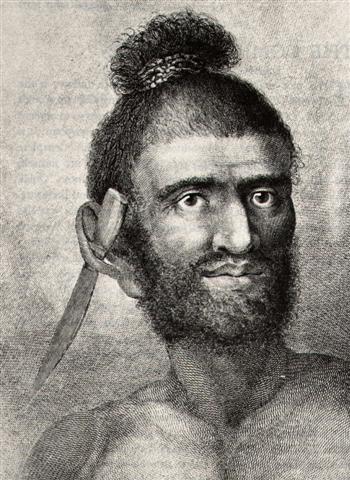500. As to the contents in this structure we can listen to the myths. The great figure in Polynesian myth was Maui and it was told that he had been born from the topknot of his mother: ... Now Taranga listened to all this in amazement. For in the custom of our people, if a child was born before it finished growing in its mother's womb and died without knowing any of the pleasures of life, it was supposed to be buried with special prayers and ceremonies, otherwise it became a kind of evil spirit, always doing mischief to the human race and hurting them out of spite, because of having missed the happiness that they enjoy. All the evil spirits had a beginning of this sort. So Maui was a little demi-god of mischief. The story he had told was true, and as his mother listened she remembered it all. 'From the time I was in your womb,' Maui went on, 'I have known the names of these children of yours. Listen,' he said as he pointed to his brothers in turn. 'You are Maui mua, you are Maui roto, you are Maui taha, and you are Maui pae. And as for me, I am Maui potiki, Maui-the-last-born. And here I am.' When he had finished, Taranga had to wipe her eyes because there were tears in them, and she said: 'You are indeed my lastborn son. You are the child of my old age. When I had you, no one knew, and what you have been saying is the truth. Well, as you were formed out of my topknot you can be Maui tikitiki a Taranga.' So that became his name, meaning Maui-formed-in-the-topknot-of-Taranga. And this is very strange, because women in those days did not have topknots. The topknot was the most sacred part of a person, and only men had them ...
All true myths must have a connection with cosmos. Therefore we can identify his birthplace with Sirrah:
At the time of rongorongo Sirrah rose with the Sun in March 21 which was 11 + 80 = 91 days counted from the solstice in December 21 (355):
Therefore the birthplace of Maui was at the current equinox and he was the 5th of the sons of Taranga:
In the C text we can compare the last glyph in line Ca1 with the position Maui held after his great Sky ancestor had saved him from the waves: ... But little Maui stood up for himself. 'Well then, I'd better go, I suppose', he said. 'Since you say so, I must be someone else's child. But I did think I was yours, because I know I was born at the edge of the sea, and you cut off a tuft of your hair and wrapped me in it and threw me in the waves. After that the seaweed took care of me and I drifted about in the sea, wrapped in long tangles of kelp, until a breeze blew me on shore again, and some jelly-fish rolled themself around me to protect me on the sandy beach. Clouds of flies settled on me and I might have been eaten up by the maggots; flocks of seabirds came, and I might have been pecked to pieces. But then my great-ancestor Tama nui ki te rangi arrived. He saw the clouds of flies and all the birds, and he came and pulled away the jelly-fish, and there was I, a human being! Well, he picked me up and washed me and took me home, and hung me in the rafters in the warmth of the fire, and he saved my life. And I grew, and eventually I heard about the dancing you have here in this house, and that is what brought me here tonight.'
The illustration in Ca1-26 was probably intended to represent a stylized human head, as we can deduce from the tagata (man) type of glyph:
Polaris was at the very top of the sky dome (like a top-knot) and in Roman times the First Point of Aries came at 0h in the following day:
The precession of the equinoxes and solstices as measured out against the fixed stars in the night sky had a cycle of about 26000 years and this meant that at the time of rongorongo Polaris had been pushed ahead in the Sun calendar with about 1842 / 26000 * 365.25 = 26 days. Likewise would Sirrah in Roman times have risen with the Sun about 26 days earlier than in March 21, viz. in day 80 - 26 = 54 = 'February 23. This day was named Terminalia (End Station): ... The leap day was introduced as part of the Julian reform. The day following the Terminalia (February 23) was doubled, forming the 'bis sextum - literally 'double sixth', since February 24 was 'the sixth day before the Kalends of March' using Roman inclusive counting (March 1 was the 'first day'). Although exceptions exist, the first day of the bis sextum (February 24) was usually regarded as the intercalated or 'bissextile' day since the third century. February 29 came to be regarded as the leap day when the Roman system of numbering days was replaced by sequential numbering in the late Middle Ages ... Much further back in time Sirrah would of course have been at the December solstice, approximately 100 / 365.25 * 26000 = ca 7100 years earlier.
|
|||||||||||||||||||||||||||||||||||||||||||||||||||||||||||||||||||||||||||||||||||||||||||||||||||||||||||||||||||||||||||||||||||||||||||||||















